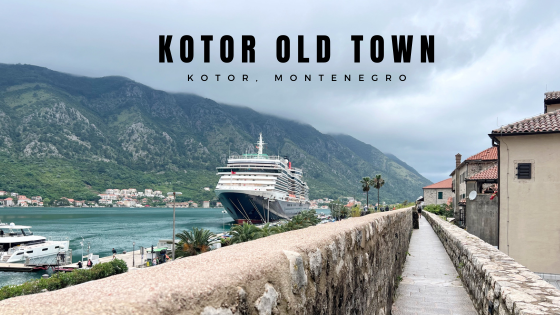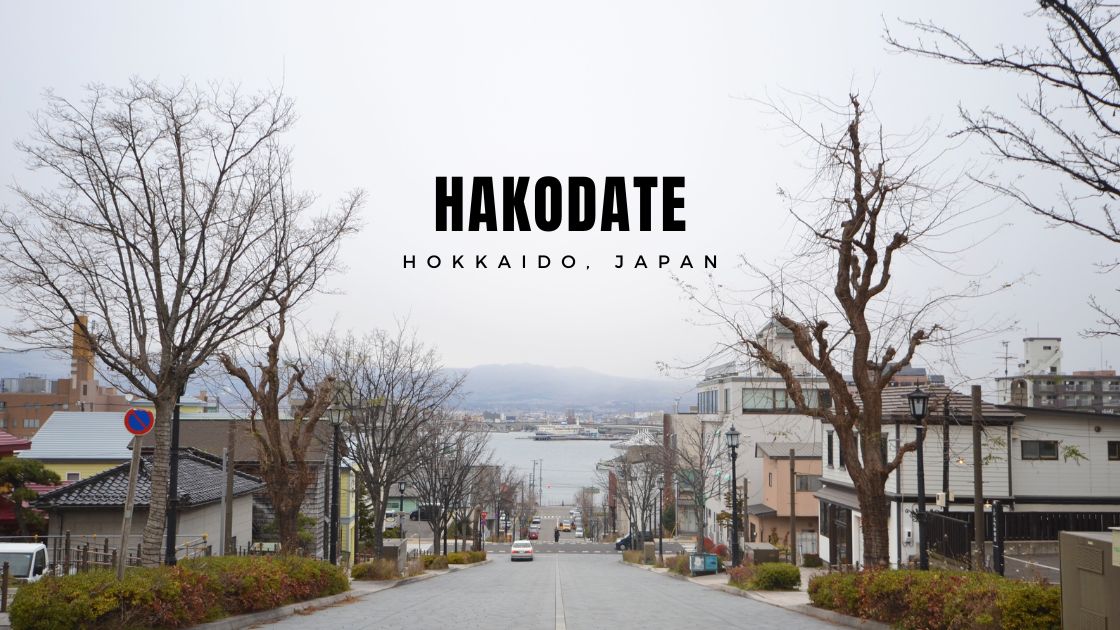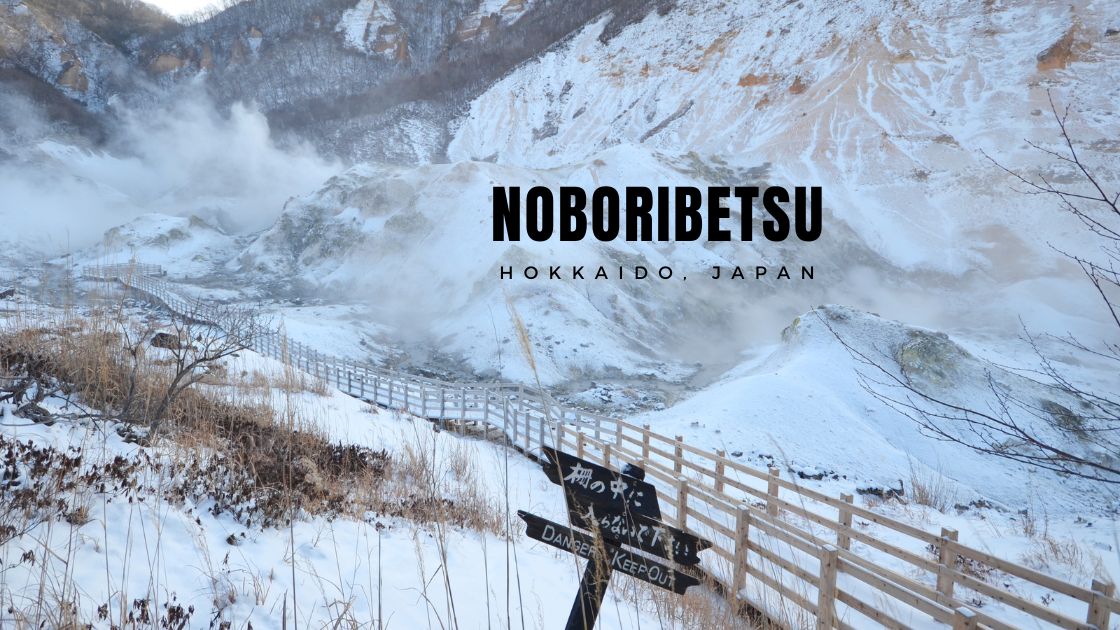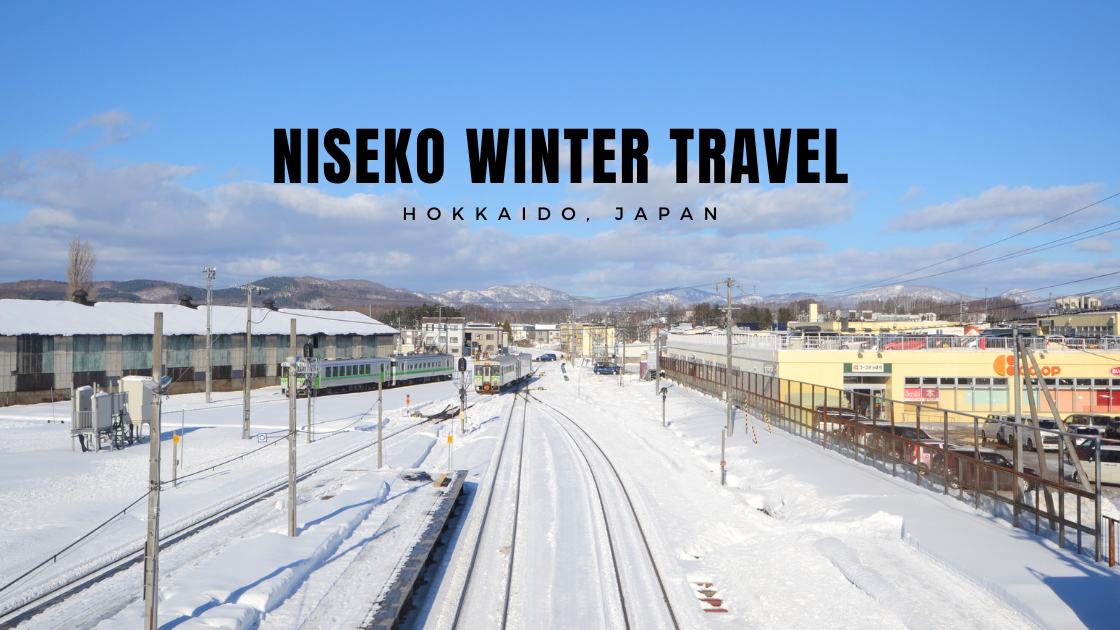Staying just outside the medieval walls at Hostel Pupa, I had the perfect base for a full day of exploring Kotor Old Town. Just a short three-minute walk from the entrance, it felt like stepping from the present into a well-preserved piece of history. The town, encased within its ancient fortifications, is a maze of narrow streets, small courtyards, and historical landmarks. My plan was simple—walk everywhere, soak in the atmosphere, and let the town unfold at its own pace.
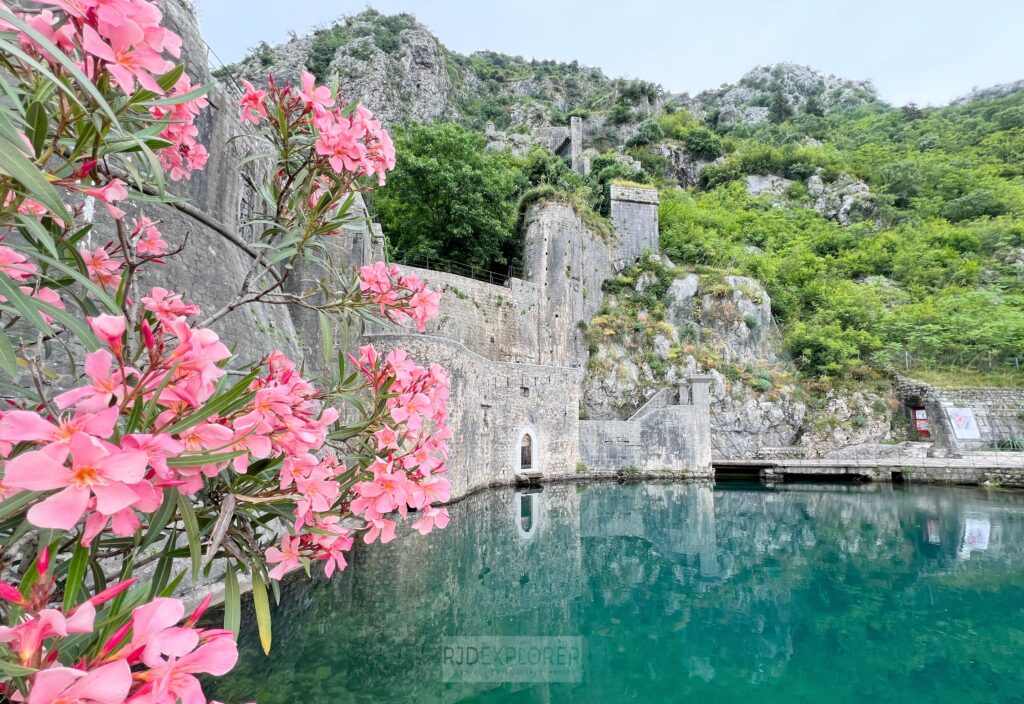
The Sea Gate, Kotor Old Town’s main entrance, is an imposing structure built in 1555 under Venetian rule. The moment I stepped through, centuries-old stone buildings and bustling cafés surrounded me.
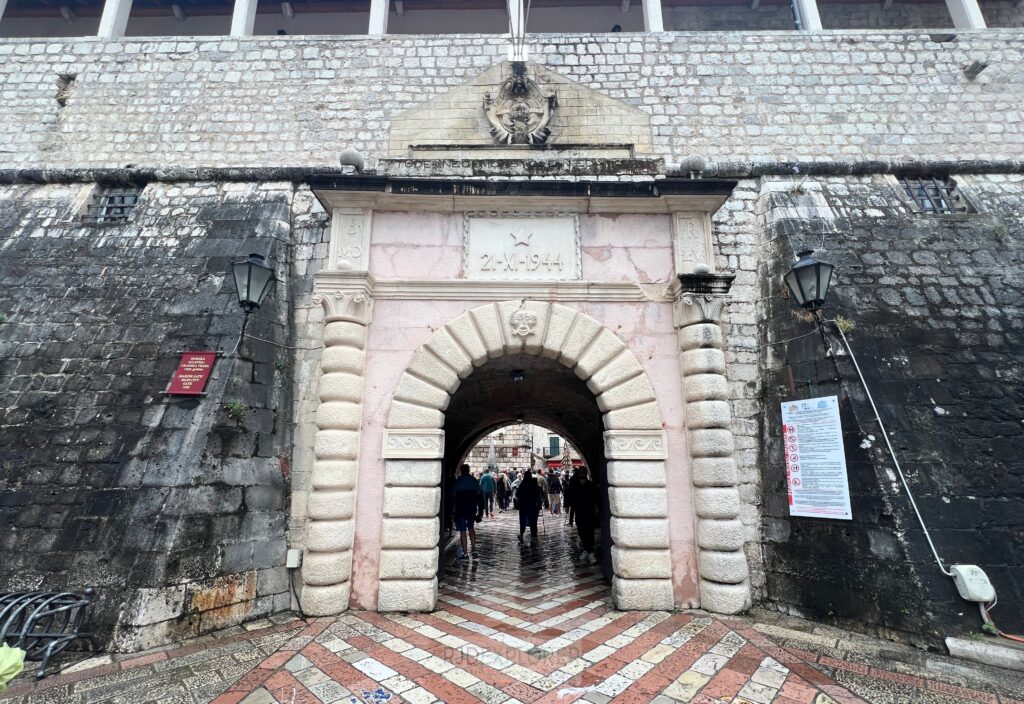
The square just beyond the gate, the Square of Arms, was already alive with people. Locals sipped espresso at outdoor cafés while tourists admired the Venetian Clock Tower standing proudly at the center. Kotor’s armory once stood here—hence the name—but today, the place buzzes with life, instantly immersing you in the energy of Kotor Old Town. At times, when a cruise ship docks, crowds fill the streets, so starting your exploration early becomes essential to experiencing the town’s charm before they arrive.
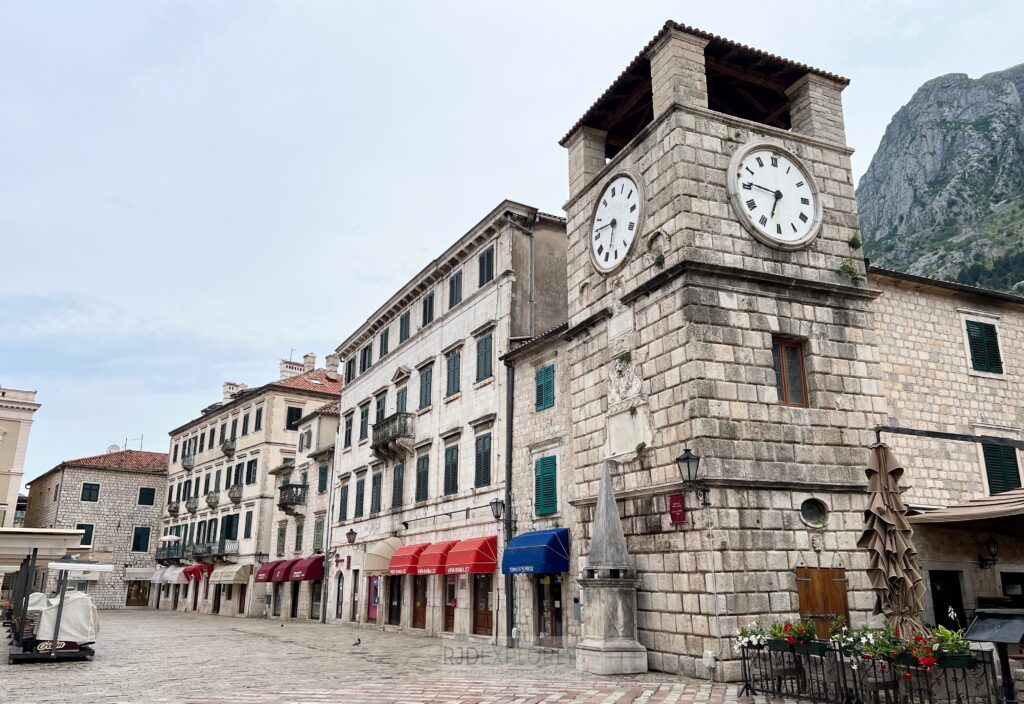
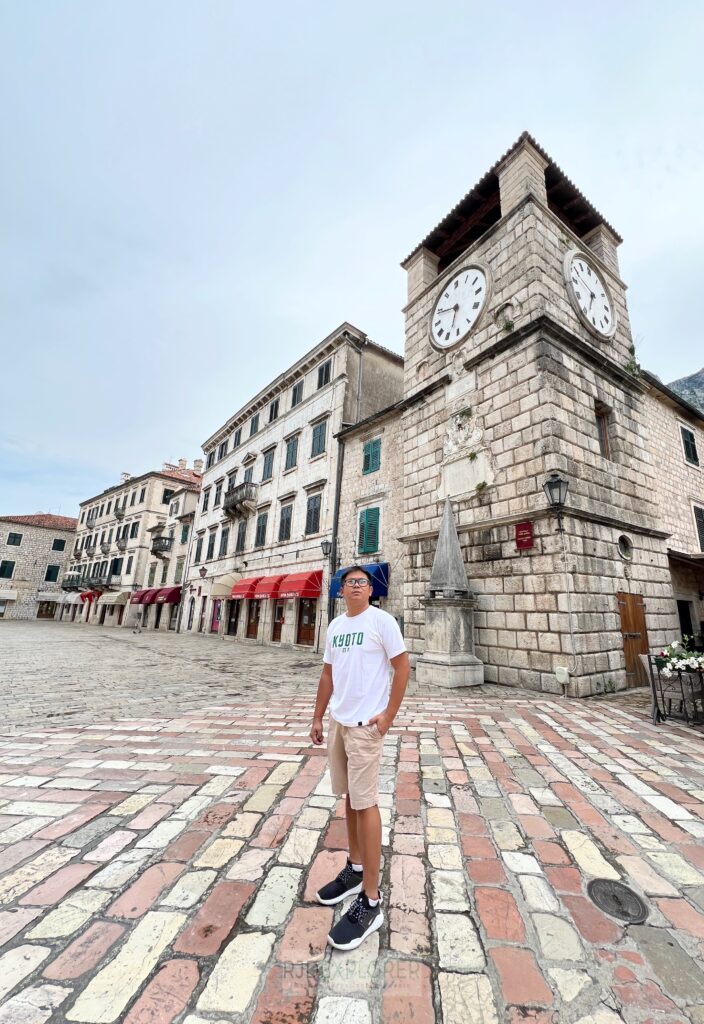
Kotor Old Town City Walls: From Kampana Tower to Gurdic Bastion
Eager for a panoramic view, I climbed the staircase to Kampana Tower, which marks one of the main points along Kotor Old Town’s city walls. From here, I could see where the walls wrapped around the town, extending up the mountain toward the fortress. Walking along the walls, I passed the Proveditor’s Palace and even glimpsed the rooftops of the bustling market below. The walls provided a unique vantage point, offering a blend of urban charm and breathtaking natural surroundings.
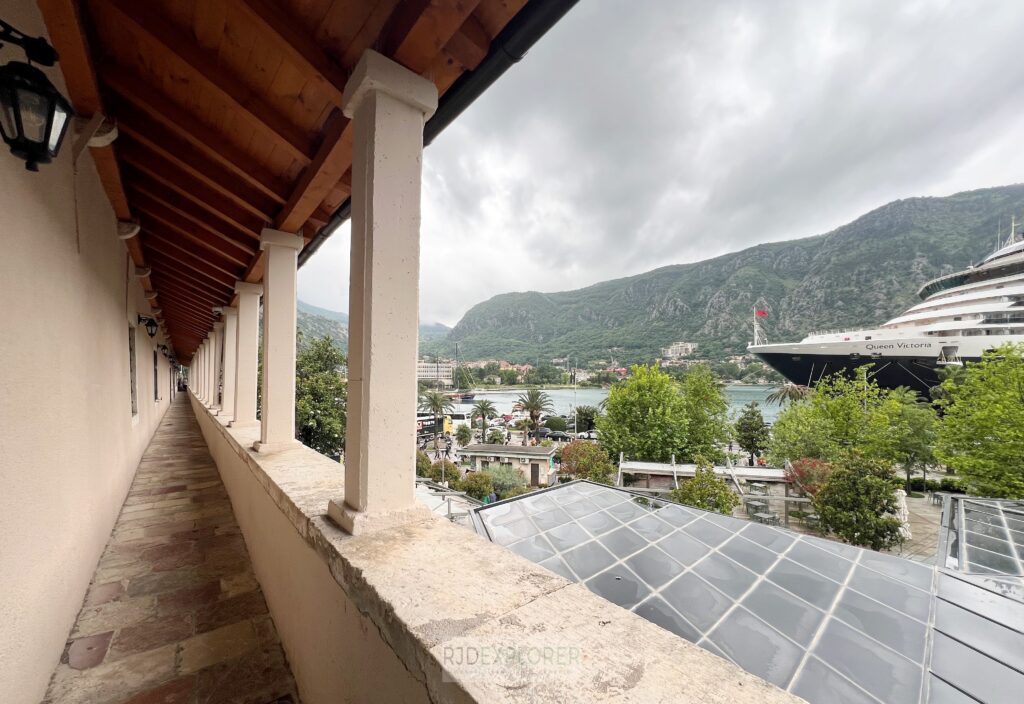
My walk eventually led me to the Gurdic Bastion, located on the southern end of Kotor Old Town. Here, I descended back into the labyrinth of alleyways, where stone pathways wove through a collection of restaurants, souvenir shops, and old residences.
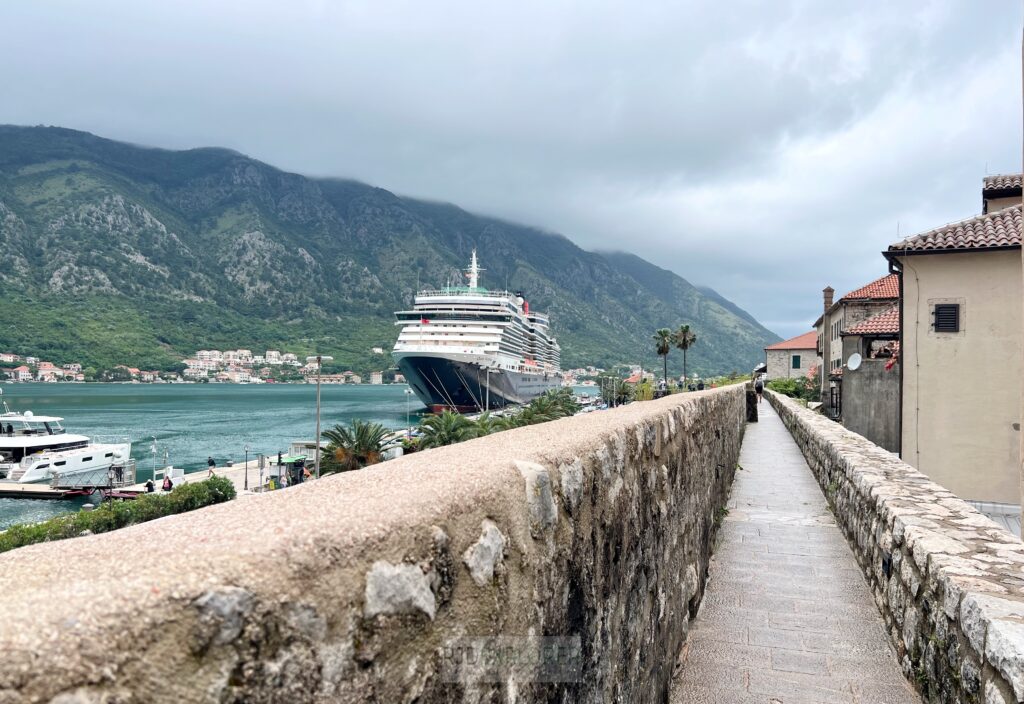
There’s no wrong way to navigate Kotor Old Town’s streets—every turn reveals something new. Some alleys led to quiet squares, while others opened up to bustling spaces with crowd.
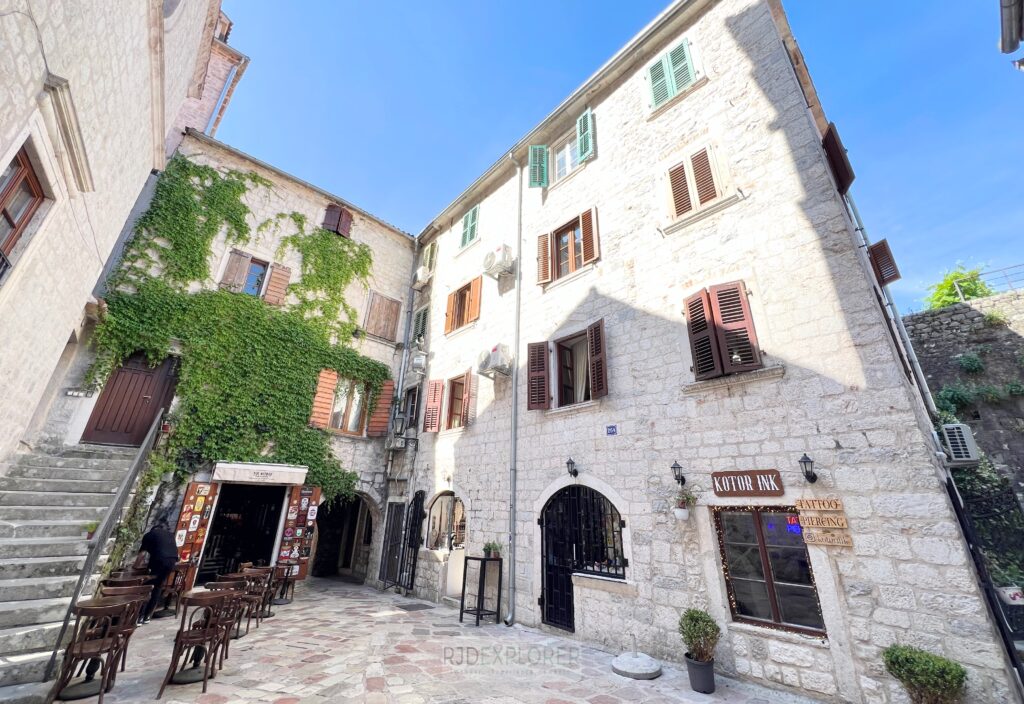
St. Tryphon’s Cathedral
Eventually, I found myself in front of St. Tryphon’s Cathedral, one of the most striking landmarks in Kotor Old Town. They built this Romanesque cathedral in 1166 and dedicated it to the town’s patron saint. The two bell towers, slightly mismatched due to an unfinished reconstruction, give the structure a unique character.
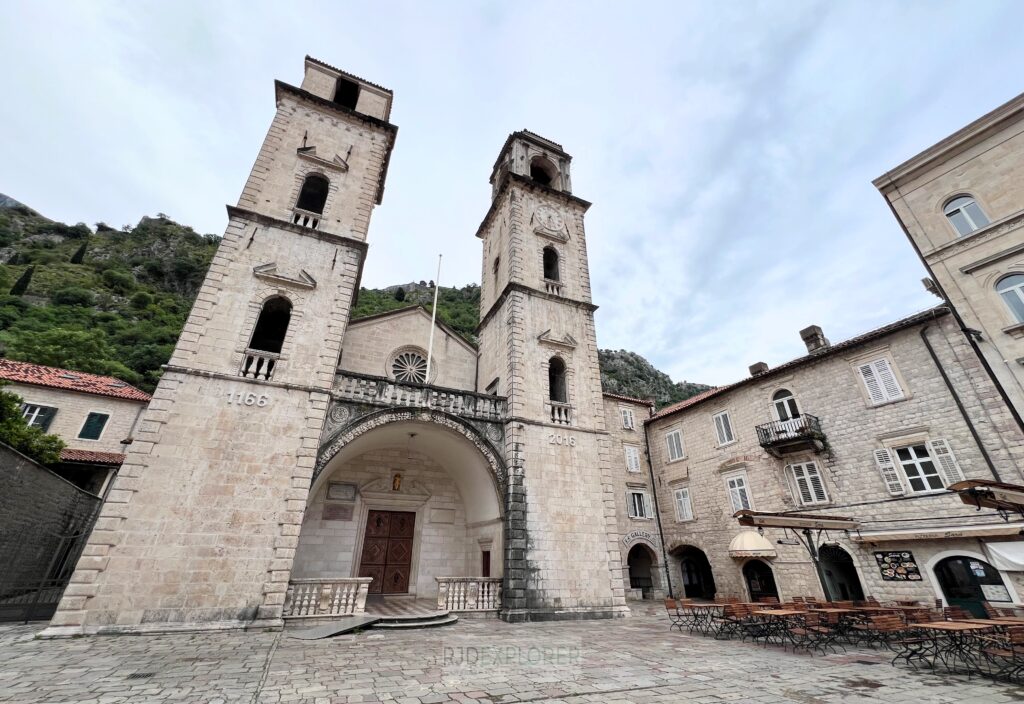
Needing a break, I stopped at Mon Bistro Cafeteria, tucked along a quiet alley beside the cathedral. The cozy atmosphere made it an ideal place to rest my feet. I ordered a coffee and a sandwich, savoring the moment as people wandered through the narrow streets around me. The nearby square buzzed with life—tour groups listened intently to guides, while locals navigated their way through the visitors with effortless familiarity.
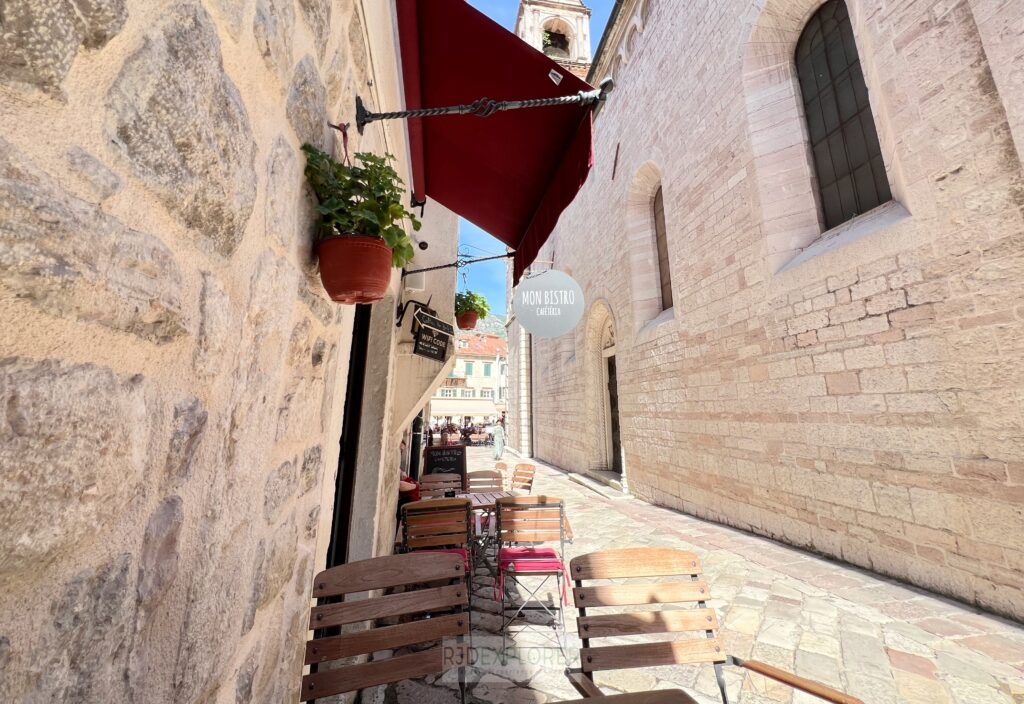
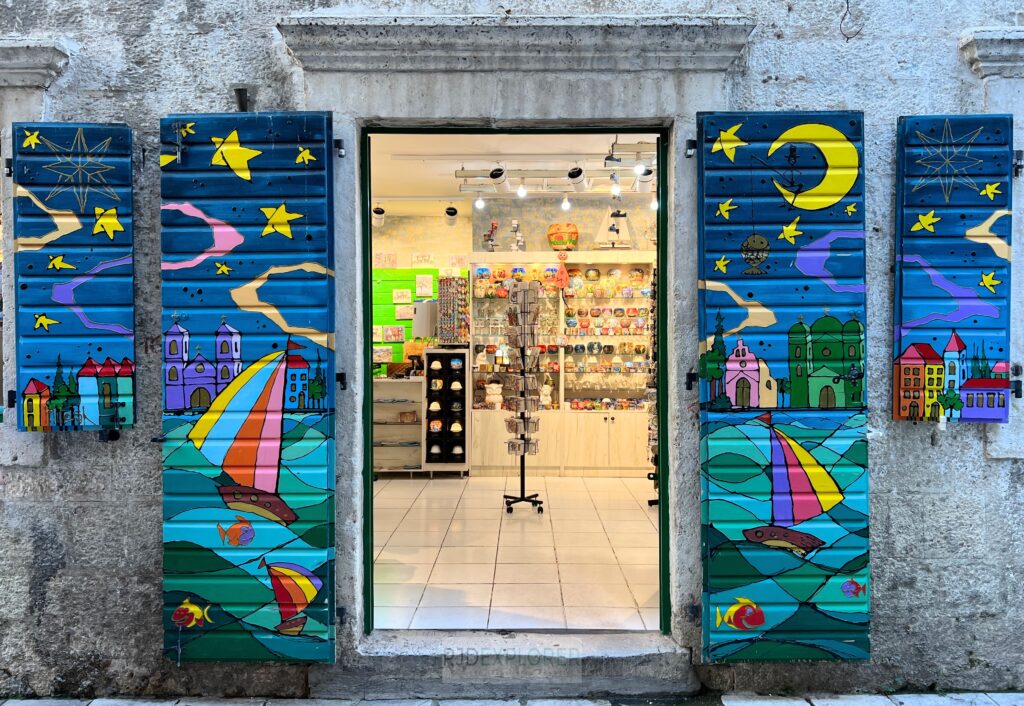
Saint Luke’s and Saint Nicholas’ Churches
After finishing my meal, I continued wandering and soon reached a charming courtyard where two churches stood side by side. Saint Luke’s Church, built in 1195, that uniquely served both Catholic and Orthodox communities in different eras.
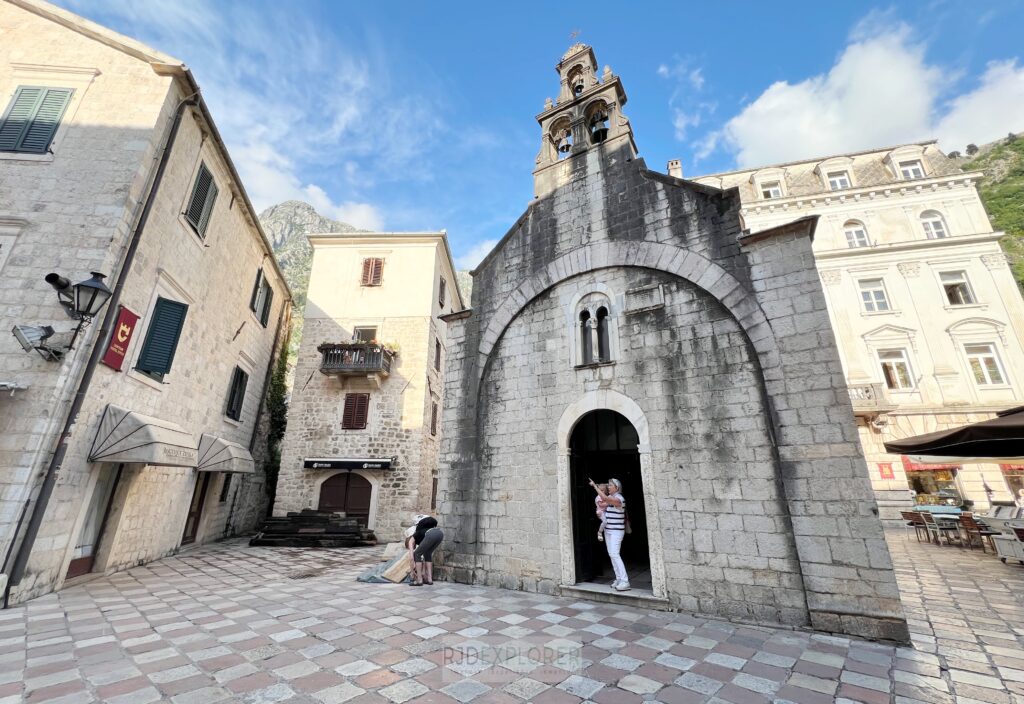
Saint Nicholas’ Church, the larger of the two, displayed an imposing Serbian Orthodox style. The Serbian Orthodox Church flag adorns the façade, signifying its deep connection to the region’s Orthodox Christian community.
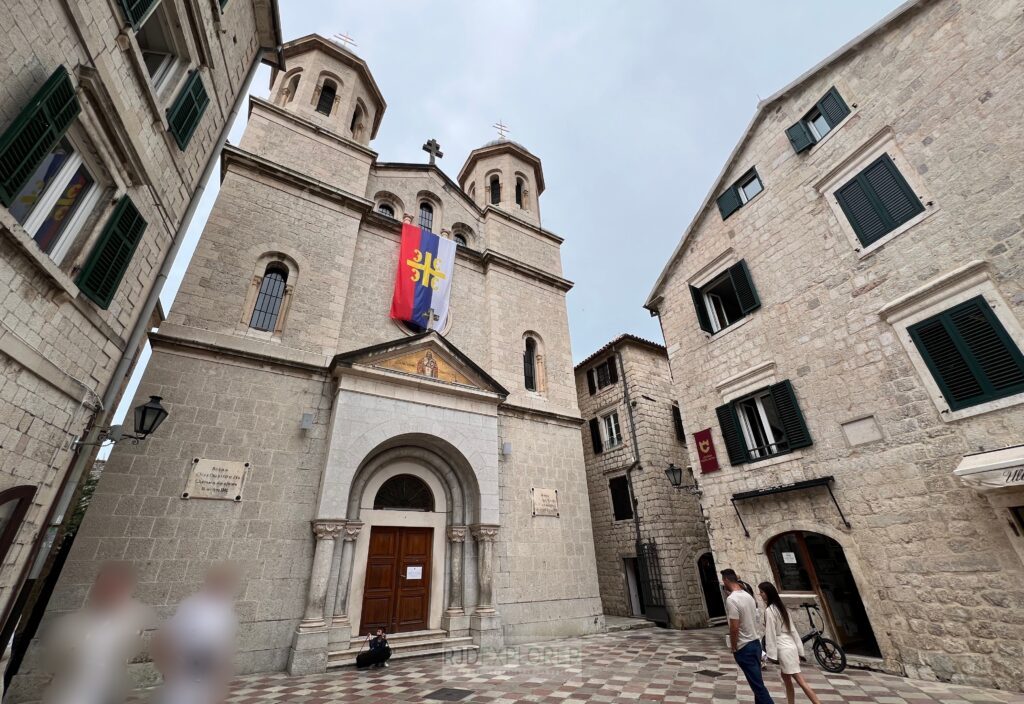
Church of St. Mary Collegiate
Following the flow of the streets, I made my way to the North Gate, also known as the River Gate. This lesser-used entrance opens up to views of the Scurda River, which once acted as part of Kotor Old Town’s natural defenses. Nearby stood the Church of St. Mary Collegiate, an understated but historic site with origins dating back to the 13th century. Its simple Romanesque structure was a reminder of Kotor’s deep religious history.
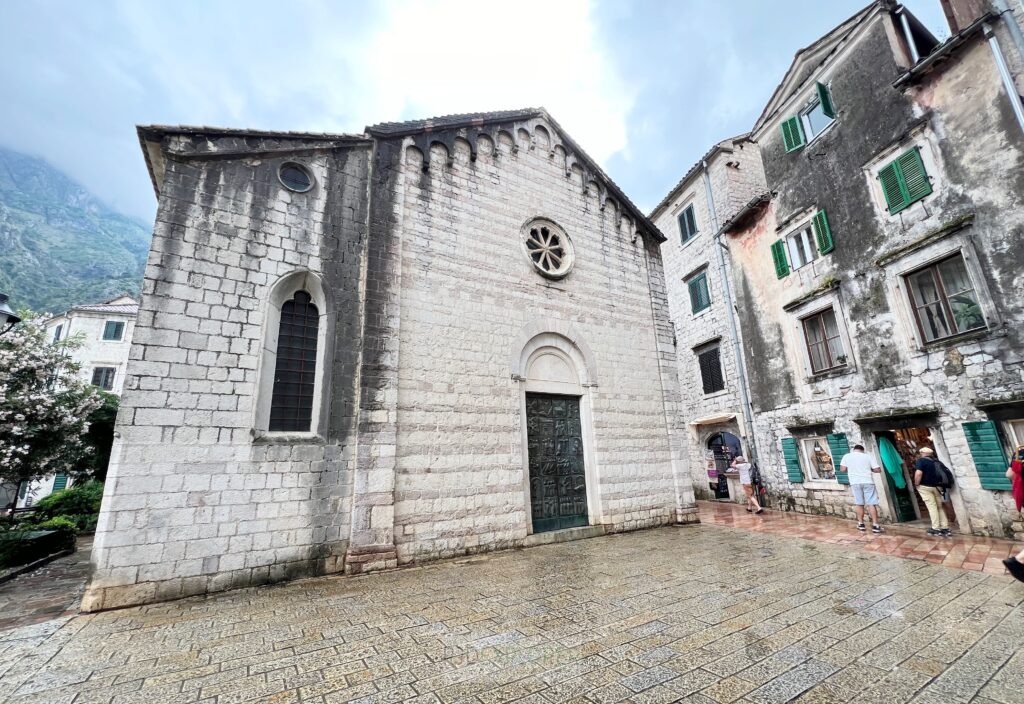
While Kotor Old Town offers several museums, including the Maritime Museum housed in a Baroque palace, I opted to keep moving. The town itself radiated the feeling of an open-air museum, with history embedded in every wall and street.
Buying Berries at Kotor Market
Before wrapping up my exploration, I made a stop at Kotor Market, just outside the town walls. The lively marketplace was brimming with fresh produce, local cheeses, honey, and homemade rakija. Stalls overflowed with vibrant fruits, and the scent of dried herbs lingered in the air. I treated myself to a bundle of raspberries, blackberries, and blueberries—a refreshing snack after hours of walking.
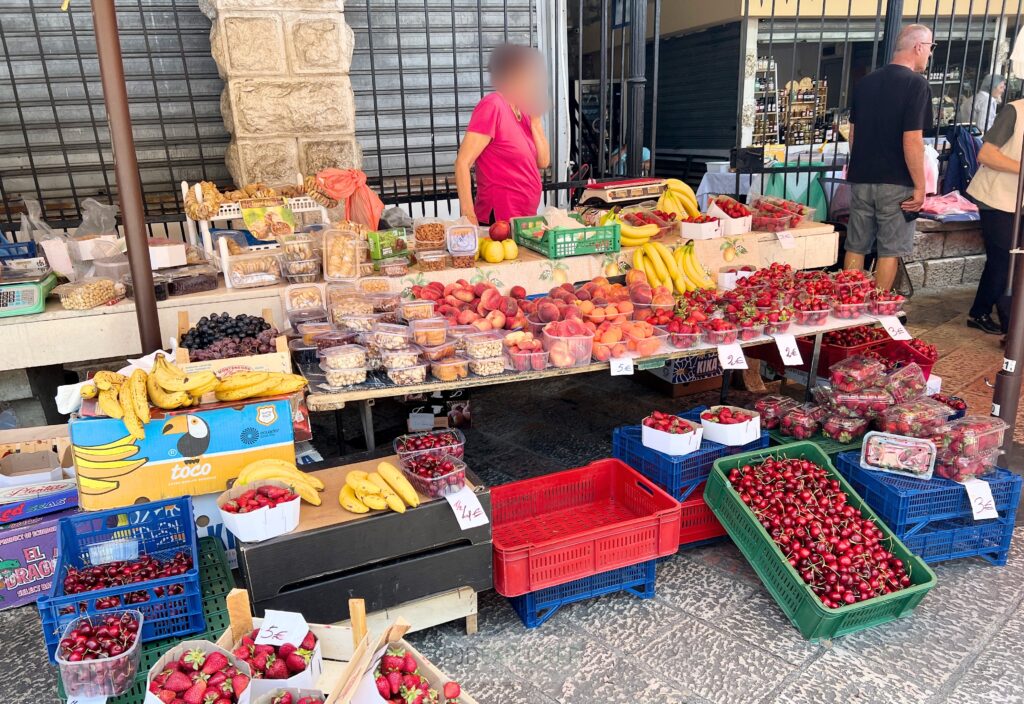
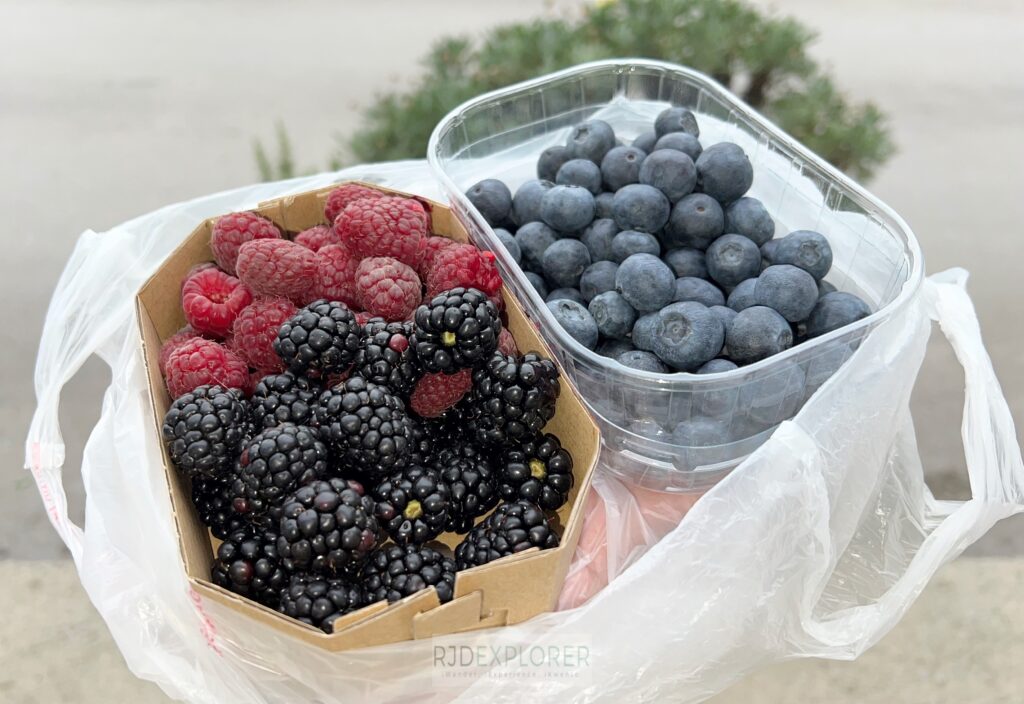
Unwinding at Little Bay Restaurant
From Kotor Old Town, I walked towards the waterfront and found a table at Little Bay Restaurant. The setting was perfect—boats gently bobbed in the harbor, and the calm waters reflected the soft light of the late afternoon. I ordered a meal, took out my laptop, and caught up on some work while enjoying the peaceful ambiance. The contrast between the lively Kotor Old Town and the tranquil bay made for a perfect balance to end the day.
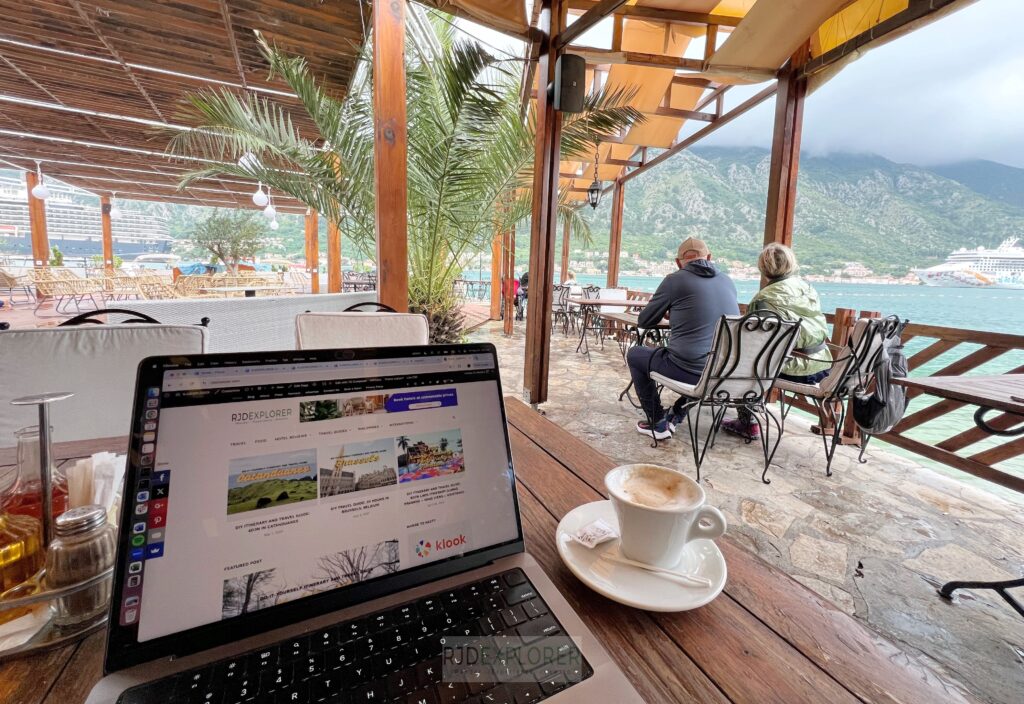
As occasional raindrops began to fall, I made my way back to my hostel. The day had been a perfect blend of history, culture, and exploration. There’s something special about Kotor Old Town—its ability to transport you to another time while still feeling entirely alive in the present. And with more to see, I knew I’d be back for another adventure.

